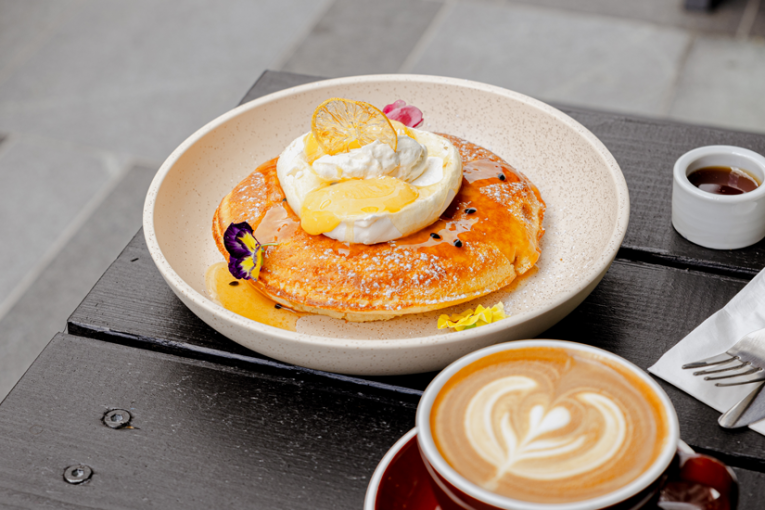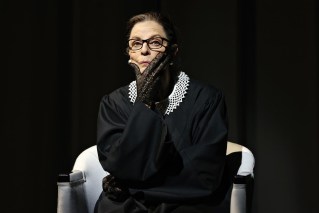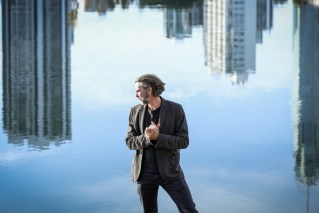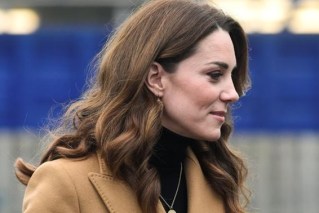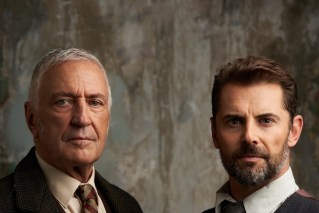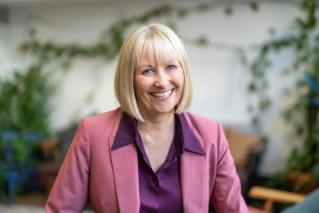Watson’s way: The power and the passion of the family tree
Queensland artist Judy Watson mines her indigenous heritage and our colonial past in a stunning survey exhibition at Queensland Art Gallery

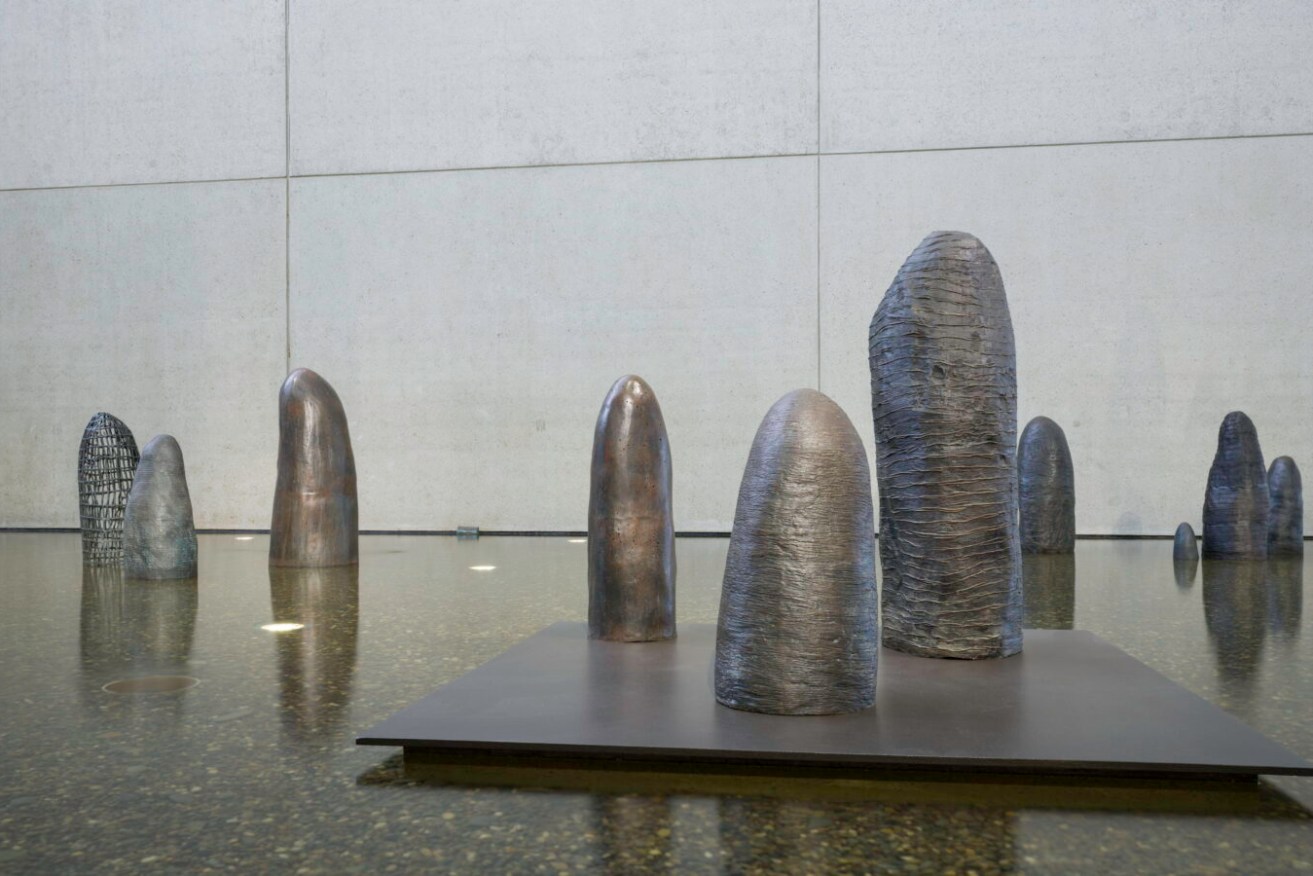
Walama by Judy Watson creates a mystical presence in the Watermall at the Queensland Art Gallery, courtesy the artist, Milani Gallery and UAP Brisbane (Meeanjin/Magandjin). Photo: C. Callistemon © QAGOMA
She’s prolific and has gained international renown, but some Queenslanders might not know who Judy Watson is. A survey of her work that has just opened at Queensland Art Gallery is set to change that. It should.
For more than four decades, Watson has created powerful, ethereal works of art channelling the stories of her family’s Waanyi Country in north-west Queensland.
mudunama kundana wandaraba jarribirri: Judy Watson is a comprehensive survey of the renowned Queensland Indigenous artist’s incisive meditations on colonial, social and ecological concerns. It is her most extensive solo exhibition to date.
The exhibition includes 130 works, across painting, print, sculpture, installation and video, from an artistic practice centred on truth-telling around the environment, historical government policy affecting Indigenous Australians and institutions that collect First Nations cultural material and remains.
The title translates as “tomorrow the tree grows stronger” and is taken from a poem in Waanyi language by the artist’s son Otis Carmichael.
Just as a young tree grows in strength, the act of reclaiming and voicing Indigenous language encourages a regeneration of culture.
Watson has been encouraging the regeneration of culture for decades, says QAGOMA director Chris Saines, who describes her as “one of Queensland and Australia’s most globally collected and exhibited artists”.
“Since the early 1980s Watson has drawn powerful stories and profound truths from the country of her matrilineal family and fashioned them into fluid and ethereal works of art,” Saines says.
Fluid and ethereal are good descriptions because her works sometimes feature waterways, often from an aerial view, and their ethereal nature is an interesting conundrum. Because although they may look beautiful – in fact they do – her works often tell ugly stories of dispossession and alienation. The fact that the artist draws us in with the beauty of her work is not just a clever ploy. She has an aesthetic that makes her work attractive and accessible but she also manages to inform and educate.
Watson has been doing this for decades. Born in Mundubbera in 1959, Watson has exhibited internationally since 1983 in a career including a breakthrough showing at the Venice Biennale alongside Emily Kame Kngwarreye and Yvonne Koolmatrie in 1997.
Her history with QAGOMA began with her work in the inaugural Asia Pacific Triennial of Contemporary Art in 1993. Her monumentally scaled bronze net sculpture tow row, at the entrance to the Gallery of Modern Art (GOMA) was commissioned to mark that gallery’s 10th anniversary. It’s the first thing anyone visiting the gallery sees. Which seems appropriate.
This current exhibition was curated by Katina Davidson, curator of indigenous art at QAGOMA. She has divided the exhibition into several themes: identity, the archive, feminism and environmentalism. Sometimes themes can seem contrived but, in this instance, they seem quite natural and form a cohesive whole in an exhibition that takes your breath away.
No Queenslander should miss seeing this. If you have visitors coming to town anytime soon, from interstate or overseas, make this a must on your itinerary.
It’s a comprehensive exhibition includes the largest collection of Watson’s video works ever shown along with artist books and prints dating from the early 1980s.
Central to the exhibition, according to Davidson, are 35 of Watson’s large unstretched canvases, “impressively and seductively charged with her signature treatment of pigment combined with pastel”.
“These multi-layered unstretched canvasses have been a mainstay of Watson’s practice since the 1980s,” Davidson says. “Pressed with intense fields of ochre, ultramarine and sanguine pigments, they speak of land and sea and map memories and histories important to her identity as an Aboriginal woman.”
Some of the historical stories that Watson tells are confronting. In the 2008 work blackfellows ears, lawn hill station, Watson references a diary entry from 1883 by Emily Caroline Creaghe who recorded her visit to the famous Lawn Hill Station on the Waanyi Country of Watson’s ancestors.
Creaghe witnessed a macabre scene: “40 pairs of blacks’ ears nailed around the walls, collected during raiding parties after the loss of many cattle speared by the blacks”. Watson’s work features an installation of cast wax ears to emphasise the horror and brutality of part of our colonial past.
Apart from the walls of the gallery there is work by Watson in the Watermall outside. This is a series of bronze termite mound sculptures, walama, originally created for temporary display at Sydney International Airport in 2000.
These forms have a double meaning, though, which also references the artist’s European ancestry in that the sculptures also resemble Celtic standing stones. They create an almost mystical aura in situ and encourage meditation on what you have just seen or are about to see.
Mudunama kundana wandaraba jarribirri: Judy Watson continues at Queensland Art Gallery until August 11.
qagoma.qld.gov.au
This article is republished from InReview under a Creative Commons licence. Read the original article.
InReview is an open access, non-profit arts and culture journalism project. Readers can support our work with a donation. Subscribe to InReview’s free weekly newsletter here.![]()
